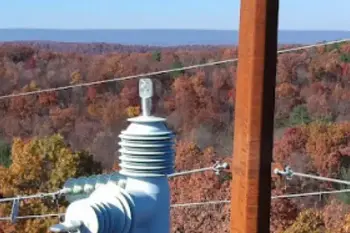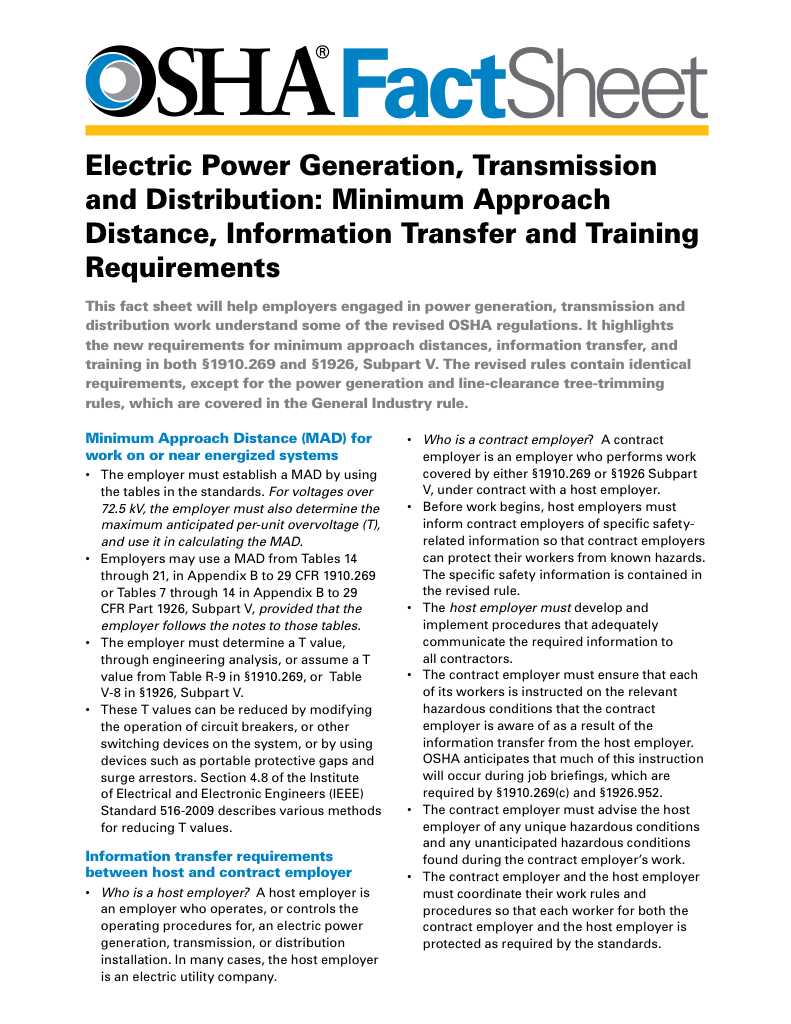Understanding How Overhead Switchgear Innovation Cost-Effectively
By G&W Electric

Download Our OSHA 3873 Fact Sheet – Minimum Approach Distance and Training Requirements

- Calculate MAD using voltage and overvoltage values
- Ensure proper communication between host and contract employers
- Meet OSHA training requirements for qualified electrical workers
How Overhead Switchgear Innovation Cost Effectively? Advanced medium-voltage reclosers, vacuum interrupters, and SCADA-enabled smart sensors enhance reliability, reduce arc-flash risk, cut lifecycle maintenance, and optimize distribution networks for grid modernization and predictive maintenance.
How Overhead Switchgear Innovation Cost Effectively?
BACKGROUND
Achieving many of the globe’s top priorities depends on an unprecedented expansion of electric generation capacity. A report released last year by the Electric Power Research Institute (EPRI), for example, forecast that achieving net-zero carbon emissions in the U.S. by mid-century would require a nearly 500 percent increase in electricity generating capacity.
A decarbonized future powered largely by renewable electricity generation depends on a reliable grid, especially the transmission grid. A new report by the National Academies of Science, Engineering, and Medicine in the U.S. laid out a blueprint for achieving 2050 net-zero goals, and strengthening and expanding the transmission system was a key component because the transmission system is so important both to integrating renewables and delivering clean energy to where it is consumed. The reliability of the transmission and sub-transmission grid is particularly vital as clean electricity is increasingly relied on to fuel transportation, heating and cooling, and manufacturing and industrial processes. Indeed, the ability to sectionalize and reroute power when an outage hits the sub-transmission system has an outsized impact on reliability because high-voltage grids serve so many homes and businesses. As planners modernize regional networks, an understanding of electricity transmission principles helps explain how long-distance power flows and interconnections support resilience.
The high costs and environmental impacts of status quo solutions
G&W Electric’s Viper®-HV overhead switchgear solution is an important innovation in efforts to simultaneously reduce utility operating expenses (OPEX), improve sub-transmission grid reliability, and integrate more renewables. The genesis of the Viper-HV switching solution was when two utilities approached G&W Electric, one of the U.S.’s largest recloser and switchgear manufacturers, with the request that the company develop a 72.5 kV recloser able to switch and sectionalize sub-transmission power lines to maintain reliability. Deployed on critical transmission lines, such devices expand sectionalizing options without the footprint of new substations.
The reason the utilities and the wider industry were so keen on an overhead solid dielectric solution able to enhance sub-transmission grid reliability was because existing options were inadequate – especially because the sub-transmission system needs both the ability to sectionalize the grid to maintain reliability when faults occur and because it demands advanced monitoring to quickly detect, locate, and respond to outages. Historically, sectionalizing the sub-transmission grid has been handled by motor-operated switches that were insulated either by air or gases such as SF6. Because these products are mechanical devices, they require frequent inspection and maintenance. Not only does this put stress on already tight utility OPEX budgets and a workforce stretched thin by retirements, mechanical devices exposed to the elements can also fail. Utilities increasingly pair such equipment with distribution automation strategies to accelerate fault isolation and service restoration.
Overhead switchgear innovation drives desired and unexpected sub-transmission grid benefits
Development of the Viper-HV overhead switchgear solution took years, with significant input from customers and industry experts. But the advances made deliver important benefits to sub-transmission grid reliability and intelligence, along with improved costs. Indeed, the Viper-HV is a solid dielectric overhead switchgear solution that can respond quickly to temporary faults and deliver the sectionalizing the utilities originally requested, as well as serving as a creative alternative to circuit breakers and bringing reclosing capabilities where applicable. These capabilities align with broader smart grid objectives that emphasize pervasive sensing, coordinated control, and adaptive protection.
Manufactured with a robust, proprietary, time-proven process, the Viper-HV solution is made to solve several pressing sub-transmission grid reliability and cost concerns. For example, it is made to complete a minimum of 10,000 operations without any need for maintenance – which delivers relief to utility OPEX budgets and frees up limited staff for other tasks. Reduced maintenance cycles also streamline power distribution workflows and spare-parts planning for field crews.
Besides providing a low-cost, no-maintenance solution for sub-transmission grid sectionalizing, advanced reclosing technology is important for other reasons as well, including:
Precise location of faults for rapid power restoration
One of the primary challenges facing utilities trying to restore power when there is an outage is finding the fault that caused it. Existing solutions can approximate the location of a fault, which still requires utility personnel to devote precious time to pinpointing its exact location – often in harsh weather conditions – which results in longer restoration times and customer and regulator frustration. The Viper-HV overheard switchgear solution can be equipped with controllers with built-in intelligence enabling precise fault location. The Viper-HV solution includes switching technology plus controllers to include not just impedancebased algorithms but traveling wave fault location determination, which is suitable on longer sub-transmission lines. While most sub-transmission applications are AC, awareness of evolving direct current technology informs protection coordination, converter siting, and interoperability decisions.
Rapid and less costly integration of renewables
Many nations are accelerating deployments of renewable energy to reduce greenhouse gas emissions and achieve ambitious decarbonization targets. Distributed energy resources (DERs) like solar and wind increasingly connect to the transmission and sub-transmission grid – especially when an extra transmission line is added to existing infrastructure to take advantage of an advantageous renewable energy location. DERs introduce complexity to the grid, including more frequent switching than is normal on sub-transmission feeders. The Viper-HV technology, since it was certified as a recloser with 10,000 operations capability, is more suitable than traditional motor operated switches. Furthermore, the form factor of the Viper-HV overhead switchgear is easier to install than other solutions. Pairing sectionalizing schemes with strategically sited critical energy storage can further smooth variability and enhance grid stability during switching events.
Removes need to add expensive and time-consuming grid infrastructure
Another significant benefit of advanced overhead switchgear technology: it can avoid the necessity to add new substations. In cases when a new feeder and circuit breaker need to be added to a sub-transmission system substation, the Viper-HV overhead switchgear solution can increase the speed and lower the cost. That’s because traditional circuit breakers need to be ground-mounted on a concrete pad, which takes up space many substations don’t have and involves permitting that can take a lot of time. By contrast, the Viper-HV overhead switchgear solution can be mounted on the already grounded metal frames most substations have available. This takes no additional space and doesn’t require a time-consuming permitting process.
Advances in technology are essential for increasing the reliability and resiliency of the sub-transmission grid. At the same time, these technologies must lower, rather than elevate, the total overall costs including all aspects of the installation and lifecycle costs (i.e. maintenance, replacement). Sophisticated overhead switchgear technology provides a budget-friendly option for enhancing reliability, resiliency, and helping to green the power grid.
Test Your Knowledge About Overhead T&D!
Think you know Overhead T&D? Take our quick, interactive quiz and test your knowledge in minutes.
- Instantly see your results and score
- Identify strengths and areas for improvement
- Challenge yourself on real-world electrical topics




